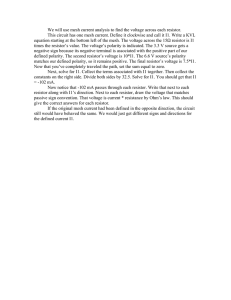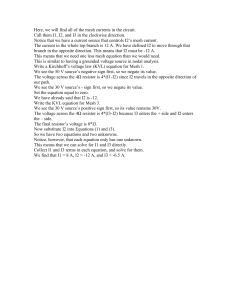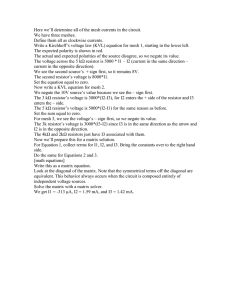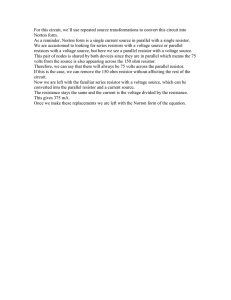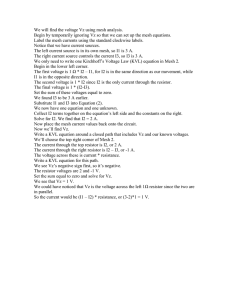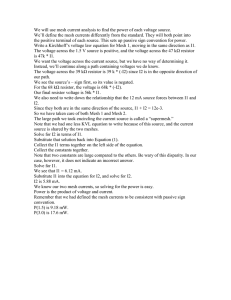Use mesh analysis to find the voltage across each resistor.
advertisement
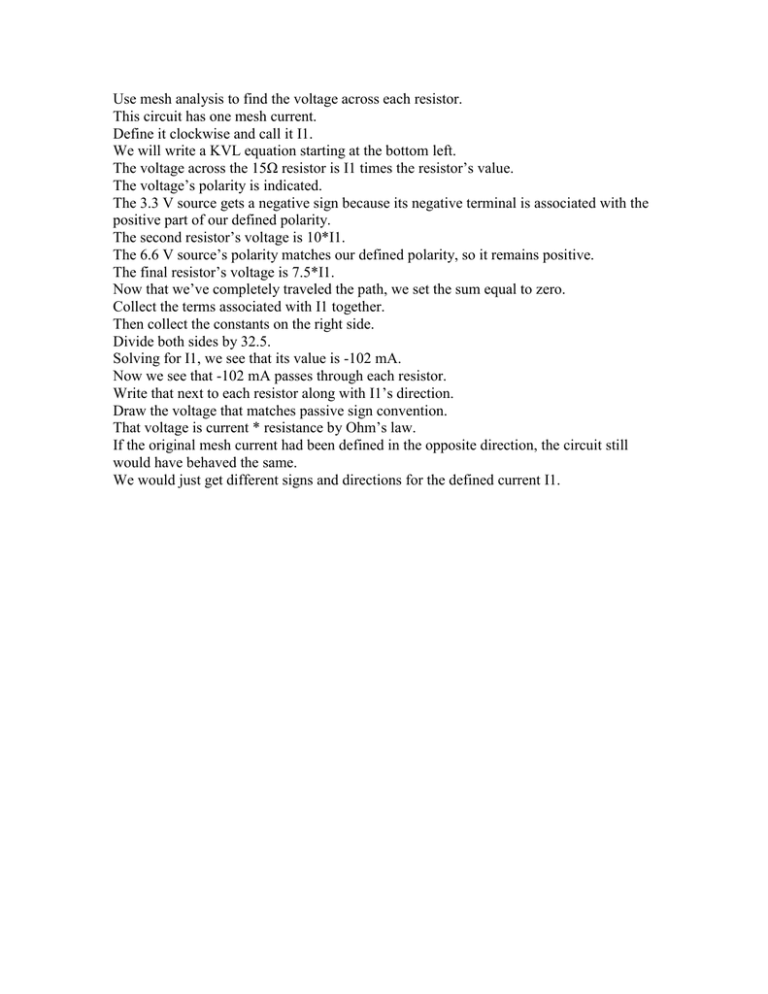
Use mesh analysis to find the voltage across each resistor. This circuit has one mesh current. Define it clockwise and call it I1. We will write a KVL equation starting at the bottom left. The voltage across the 15Ω resistor is I1 times the resistor’s value. The voltage’s polarity is indicated. The 3.3 V source gets a negative sign because its negative terminal is associated with the positive part of our defined polarity. The second resistor’s voltage is 10*I1. The 6.6 V source’s polarity matches our defined polarity, so it remains positive. The final resistor’s voltage is 7.5*I1. Now that we’ve completely traveled the path, we set the sum equal to zero. Collect the terms associated with I1 together. Then collect the constants on the right side. Divide both sides by 32.5. Solving for I1, we see that its value is -102 mA. Now we see that -102 mA passes through each resistor. Write that next to each resistor along with I1’s direction. Draw the voltage that matches passive sign convention. That voltage is current * resistance by Ohm’s law. If the original mesh current had been defined in the opposite direction, the circuit still would have behaved the same. We would just get different signs and directions for the defined current I1.
